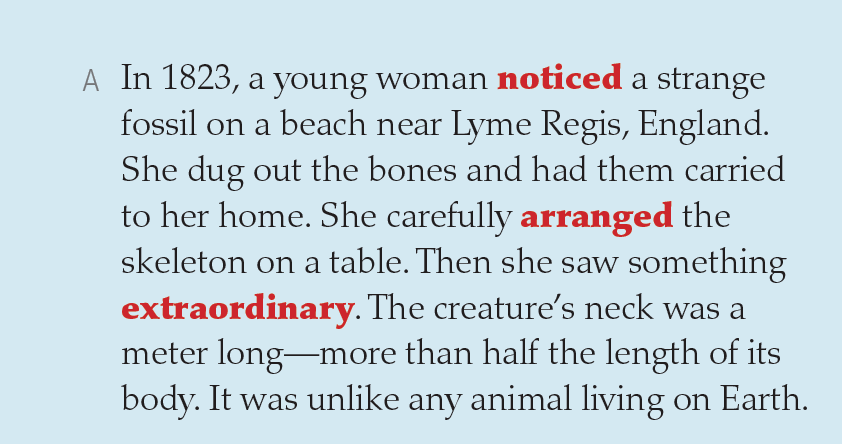“Reading is a discount ticket to everywhere,” wrote the journalist Mary Schmich. It allows us to explore the world and make exciting discoveries. But for many language learners, reading in English is a challenging and often frustrating experience. So, how can we inspire our student readers and guide them to a fuller understanding of a text?
At National Geographic Learning, we recently published a third edition of our global series Reading Explorer. As we began the revision process, we asked users of the series: What reading texts are most effective in your class? The results were very interesting.
Overall, we found that the most effective reading passages in English language classes have three characteristics. They:
1) Use a real-life theme that is relevant or relatable for students
2) Often incorporate a personal angle or story
3) Have some element of mystery—or investigate an intriguing question
In other words, reading lessons work best when they are an act of exploration. This is the approach we take when we adapt authentic National Geographic content for language learners. If learners are interested in a text—and if it has been adapted to the right level—then they are more likely to make efforts to understand it.
But even if a reading passage is interesting and accessible, there are still a number of things we, as instructors, can do to facilitate the process. One of the most important is to teach students some pre-reading strategies.
Pre-reading strategies
Before learners read the text in detail, it’s useful to have them first consider what they already know about it. After all, outside the classroom we rarely read an article or news story without understanding something about what we will read. At the pre-reading stage, have learners ask: Who or what is this passage basically about? What do I already know about that subject? For this, context clues can be very useful.
Here’s an example from Student Book 2 of Reading Explorer 3rd Edition, for students at CEFR upper B1 and lower B2 level.

There are at least 4 ways students could approach this text before they read it in detail.
1. Use visual clues
Just a glance at the images will often give clues as to what a reading is about. One useful approach is a pre-reading technique known as see-think-wonder.
Have students describe:
– What do they see in the picture(s)? Or, what is happening?
– What do they think it is? Where/When/Who does it show?
– What do they wonder about it? What would they like to know?
In this case, the images provide clues to the reading’s setting (a rocky coastal area), the person the text is probably about (a young woman), and a time frame (from the woman’s clothing, it seems to be about a person from history).
2. Use textual clues
Next, have students notice any textual clues, particularly in the reading title and in any headings or captions. From this reading’s captions, we can predict that the text will refer to England’s Jurassic Coast, and that the woman in the painting was Mary Anning, and that she inspired a famous rhyme about sea shells.
The passage title is “The Secrets in the Sand.” So we can predict the reading is probably about a person in history named Mary Anning, who looked for some kind of “secrets” in coastal areas of England.
3. Skim for gist
To get a fuller picture, have learners read the first paragraph and make predictions. The first paragraph here gives more details about the place and time, and also provides clues to the “secrets” the woman was searching for (fossil bones on the beach). The paragraph ends by describing an extraordinary creature that “was unlike any animal living on Earth.” Students can predict: What kind of creature was this? Why was Mary Anning interested in it?

Another skimming strategy is to read the first sentence of each of the other paragraphs. Put together, these often give a good idea of what the text will be about:
Even at a young age, Mary Anning had a talent for spotting “curies”—unusual or curious, fossils…
Fossil hunting brought in money, but it was a dangerous occupation…
Mary was not only a skilled fossil hunter; she also carefully examined and recorded her finds…
Mary Anning died in 1847, but her contributions have not been forgotten.
From just these four sentences, we can guess that the reading is about how Mary Anning became a fossil hunter, and why she is still remembered today.
4. Preview key vocabulary
Most texts will have certain words that are important for understanding, but which may not be familiar to the student. In this reading, for example, words like creatures, extinct, and skeleton may need to be previewed before students read.
In other cases, it may be possible for students to guess the meaning of new words from the context. For example, if we remove the red “target” words that are highlighted in the first paragraph, we can still guess the general meaning:
In 1823, a young woman _________ a strange fossil on a beach near Lyme Regis, England. She dug out the bones and had them carried to her home. She carefully ________ the skeleton on a table. Then she saw something _________.
Pre-reading strategies such as these can make the reading process more rewarding—and less intimidating—for English language learners.
For other ideas on helping students become effective readers, check out the recording of our webinar: 7 Tips for Effective Reading.
Learn more about what’s new in the third edition of Reading Explorer in this video.


